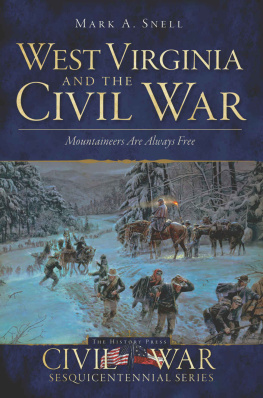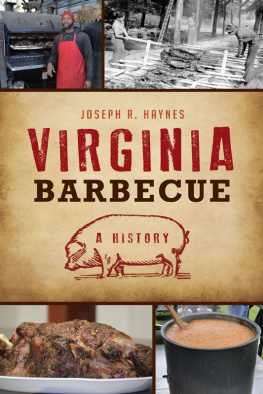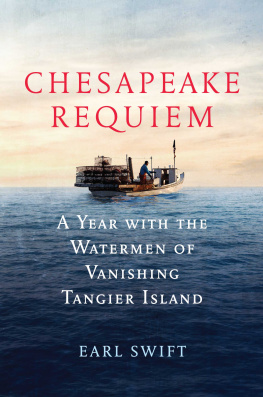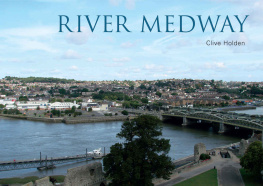Published by The History Press
Charleston, SC 29403
www.historypress.net
Copyright 2009 by Jack Trammell, PhD
All rights reserved
Cover image: Reflections of the Morning, by Tim Wilson, tawilsonphotography.com.
First published 2009
e-book edition 2013
Manufactured in the United States
ISBN 978.1.62584.276.3
Library of Congress Cataloging-in-Publication Data
Trammell, Jack.
Down on the Chickahominy : the life and times of a vanishing Virginia river / Jack Trammell with Bill Buck Jr., Art Conway and others.
p. cm.
Includes bibliographical references.
print edition ISBN 978-1-59629-695-4
1. Chickahominy River Valley (Va.)--History. I. Buck, Bill Jr. II. Conway, Art. III. Title. F232.C54T73 2009 975.5451--dc22 2009038805
Notice: The information in this book is true and complete to the best of our knowledge. It is offered without guarantee on the part of the author or The History Press. The author and The History Press disclaim all liability in connection with the use of this book.
All rights reserved. No part of this book may be reproduced or transmitted in any form whatsoever without prior written permission from the publisher except in the case of brief quotations embodied in critical articles and reviews.
INTRODUCTION
America is blessed with many beautiful rivers, and First Americans, as well as later settlers, have universally been drawn to them for sustenance, transportation and protection and because they often appeal to something instinctual. Rivers are also centerpieces around which great natural beauty often accumulates.
The Chickahominy River is not among the famous of Americas rivers; nor is it among the longest, widest or deepest. For the unique peoples who have lived along it, however, it is the river, and it gave birth to a unique culture that was intimately tied to the rivers immediate environs. This unique river culture reached its zenith in the 1930s and 1940s, right up until the completion of Walkers Dam in 1943. In the minds of many, the dam changed everythingthe fish, the water and even the feel of the river.
The living memories of those times are quickly disappearing. An opportunistic ethnographer seeks out as many primary sources as she or he can, capturing the memories, studying the artifacts and even living in the community. Even so, the effort is sometimes akin to trying to catch the wind in your hands. So much has already faded away.
But all good projects are born of good ideas, and it was Bill Bucks ideawhen he found out that I liked to fish, wrote about history and sociology and was interested in the riverto tell me about this life and suggest that I interview others and preserve their experiences of the river. Over the course of three years, I increasingly became consumed with the story of the Chickahominy River, particularly in the World War II era. I began traveling to libraries, seeking out additional interviews with surviving community members and spending more time on and along the river.
At a certain point, I determined that I had to tell the story of the river.
Such was the goal of the Chickahominy Project. Bill Buck (often referred to as Buck in the text) and others like him grew up in a unique and insular water/river community along the Chickahominy during the Great Depression and World War II eras, a community that the inhabitants perhaps took for granted at the time but one that today seems very special, in some ways innocent, and very much focused on family and work in a way that might seem incongruous. It was a community tied to the water, quickly disappearing or changing as an observer moved inland in any direction. It was a truly unique Chesapeake Bay community.
It is a community that is now more or less extinct, precariously preserved in the memories of a few older individuals who connect the present to that past. In that not-so-distant past, individuals received their mail by boat, were married on the river (literally taking their vows in rolling Chickahominy flatboats), traveled to go Christmas shopping in Baltimore by river and sometimes were even transported to their graves by river.
Today, that community is difficult and sometimes impossible to find. The river has changed. It has become polluted and been cleaned up again; seen the proliferation of subdivisions and large river homes; experienced the loss of native species and the introduction of harmful nonnative species; and suffered the loss of many of its most familiar landmarksfishing camps, riverside shack communities, fish houses and even most of the larger preWorld War II homes and riverside businesses like the brickyard.
Drawing on Bills, Arts and many others still extant memories, photographs, letters, primary documentary evidence and the remaining personal and intimate knowledge of the old river community captured in face-to-face interviews, this book attempts to highlight some of the key elements that made the Chickahominy river community so unique. It also tracks the history and environmental changes along the river and, melded with my own three years experience on the river, attempts to weave a narrative thread with a thick description of what this community consisted of and meant.
This story will be interesting to the student of Virginia history and to those seeking to preserve the bay watermans lifestyle. It will also appeal to readers who are interested in a collective past that is constantly in danger of being lost. But perhaps most importantly, it should serve as a reminder that change occurs at a pace that threatens our most important memorieseven those of our presently living parents and grandparents, whom we sometimes inadvertently take for granted until they are taken away from us.
We must cherish and preserve their memoriesthese memoriesand be more careful and cognizant in recording our own.
CHAPTER 1
BEGINNINGS AND ENDINGS
The founding of Jamestown in 1607 remains one of the great turning points in human history. On a small, low-lying peninsula in the lower James River, 105 Englishmen and boys landed and had no idea that they were changing the course of world events. They were more concerned with survival45 or so of their comrades had already perished during the long Atlantic voyage. However, the tenuous foothold they established on a mosquito-ridden island was the seed of amazing and profound things to come.
Just up the river from the settlement was a confluence where another river joined the James. Called the Chickahominy by the local native Algonquin inhabitants, this tidal river was one of the first that European colonizers of Virginia explored after the initial settlement at Jamestown was established, and for a short time, it would share with the James a focal point in modern history. It was the river where the legendary Pocahontas swam, where natives caught a rich variety of aquatic life for food and other purposes and where they helped the English survive their first terrible winter. It was also where the famous (or infamous, depending on your perspective) Englishman John Smith was captured by men loyal to Pocahontass father, Chief Powhatan, and held under a death sentence.









